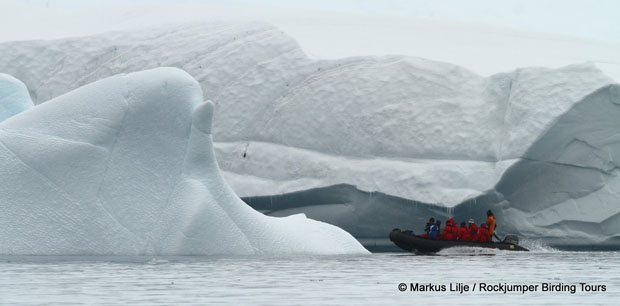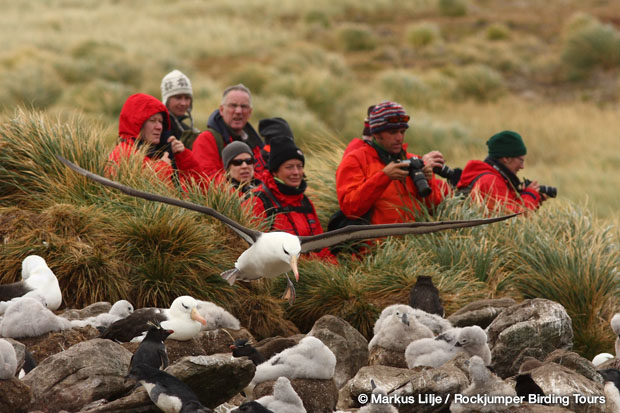
There are so many birding tours out there to choose from that it can be totally overwhelming to figure out which one is right for you. Recently there have also been a number of countries and regions that have become more accessible, making the choice even tougher. Here we will take you through some of the factors that are often considered important and that could make a difference between having a great tour and going back for more, or being disappointed because it was not what you had expected. A lot of the parameters or details of a tour are already decided before the tour even starts and you can therefore be fairly sure that a tour is well suited to you or not.
Some of the first questions to ask yourself are as follows: why are you interested in taking part in birding tours; what do you want from them; and what do you feel is less important for you in terms of ultimate deciding factors? If you are mainly interested in increasing your lifelist, seeing a very large number of species and targeting endemics, you are likely to focus on a different range of tours than if you are mainly interested in experiencing a different country through birding, or if you are also interested in a combination of birds, mammals, scenery and culture. Keep in mind that tours often tend to attract people that have a similar aim, although there is always some discrepancy of course. Once you have a good grip on your own motivations there are many other variables that you should also consider.
On our tours we try to find as many species as possible on our particular routes, as long as it is reasonable (from a time and travel perspective) and the tour does not become too rushed in the process. This means that all our tours will have a variable degree of birding intensity, because there are different numbers of species that need to be found and variation of difficulty in finding those species. In Madagascar for example there are not a huge number of species, but many of them are very hard to find, meaning that much time and effort is often required to locate the birds we are searching for. We spend time looking for the species that are considered important, trying to limit the degree to which this negatively impacts upon the rest of the tour. This means that on most tours we find a good balance between seeing a large number of species, and still ensuring a certain level of comfort and enjoyment for the participants when this is possible.
Time of year can be a big issue as most people are not able to simply pack up their bags at any time, and most countries have a fairly defined period when the conditions are best suited to birding or travelling in general. We always attempt to pick the best time of year for getting the highest species total or the maximum number of endemic and special species, which is not necessarily when most species are in the area, but this also depends on climatic conditions for example. On some occasions it also makes sense to take advantage of low-season rates as tour costs can often be reduced without negatively impacting on the number of species we expect to find. Some countries should just not be visited at certain times of the year and we would even advise against it on private tours, while others, where the endemics are the important targets for instance, can be productive during a larger part of the year. Here are some examples of good areas to visit in different months: the Indian subcontinent, Colombia, Chile, Myanmar, South Africa, Antarctica and Ethiopia from November to February. February is also good for the Dominican Republic, Jamaica and Morocco, while we mainly visit Cuba a little later on in March, since this is the best time for passage migrants. March and April are good for Cameroon and Bhutan, and our Ecuador and Philippines tours occupy this part of the calendar too. Our preferred time in East Africa is April and May in Kenya and Tanzania; towards the end of this time is when we also head into Eastern Europe and Mongolia. Uganda is best a little later towards June and July, which is when the season also begins in Papua New Guinea, and Spitsbergen is more navigable. Around August is great for Gabon, Sulawesi and Brazil, while the Namibia (including our Namibia, Okavango & Victoria Falls Overland Safaris) season begins around this time as well. September is great for much of South America, including Peru, Brazil and Bolivia. Moving into October, South Africa, Australia and Madagascar come into their most productive periods as we enter the austral summer again. Remember that this is just a brief indication and many areas are good during a variety of seasons and can be visited at other times as well.
One of the first things that is often looked at when deciding on a tour is its length and how well it fits in with any other plans that you may have. We often try to start a tour towards the end of a weekend, giving people time to reach the destination if they leave on a Friday evening or Saturday, thereby reducing the number of leave days required in order to do the tour. Most tours are also just less than 2 to 3 weeks long (with exceptions), depending on the destination, again allowing participants to arrive home on a weekend. Most of our guests prefer longer tours, as the cost and effort of distant travelling warrants this, rather than shorter tours that require proportionately relatively longer travel times. Additional options for those wanting to extend their experiences are our extensions, which are offered before and/or after many tours, targeting something different in a similar region that isn’t possible on the main tour; as well as making the most of the time and costs involved in travelling to distant destinations.
This gets us to another very important factor, namely cost. Of course, there is generally a range of tour operators offering tours to certain regions at widely varying prices. Things that can be easily overlooked however are factors such as the standard of accommodation used on tour, extra excursions such as boat rides, group size, how professional, experienced and specialized the guide is, and whether there are local guides or assistants on the tour that will assist with logistics and any language problems if these should surface. You might find a very cheap tour operator somewhere and then be disappointed to discover that you missed so many of the potential highlights because shortcuts were taken or the guide had limited birding knowledge, for example. Some destinations are also just more expensive than others, where again you would have to decide what you most want out of your trip. An important consideration when selecting a tour is potentially the number of tours that you might be able to do in the longer term. For example your recommended choice of an African tour would be different if your plans were to only visit Africa once compared to a birder who intends to make several visits to different parts of Africa over the course of their international birding time.
Something that goes along with the two previous factors is ease of travel to the tour starting point – more distant tours are usually more time-consuming and expensive to get to, while you may also need a day or two to recover from the jetlag if there is a significant time zone difference. In some cases it is possible to combine tours so that you can then take full advantage of being in that particular area; for example we offer a variety of back-to-back tours to the Indian subcontinent, Europe and the Caribbean that follow on from each other for this very purpose. This simultaneously reduces your travel costs and relative travel time to get from one particular tour to the next.
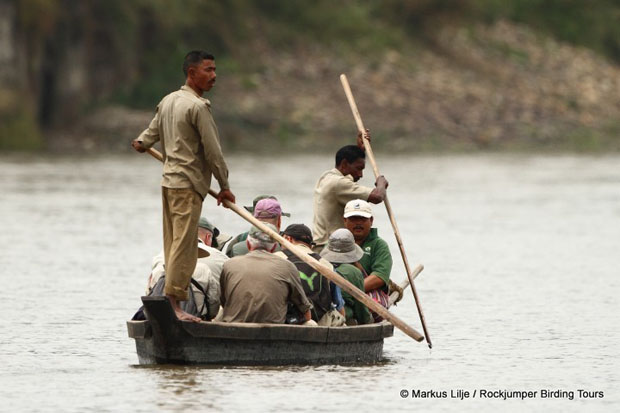
Some people have specific birds they would particularly like to see, or groups of birds or families they are really interested in ‘chasing’. Doing an entire tour for a single bird may not be worthwhile, but looking at the distribution of the species in question and seeing what else is available within the region often means that you are able to find a tour that combines a number of other interesting features as well, which would then make it an option more worthwhile for you to pursue.
How good are your birding skills? Some destinations, especially those that include visiting many forest sites, require a lot of patience, effort and skill if you expect to see most of the birds that are possible in the area. Some birders do struggle to pick up movement for example, making it very difficult for them in these tougher birding situations. Other destinations however offer more open habitats and/or more confiding birds, Ethiopia, Northern India and Kenya are examples of easier birding locations. Here the birding can be a lot less demanding and many people derive more pleasure and less frustration from such tours.
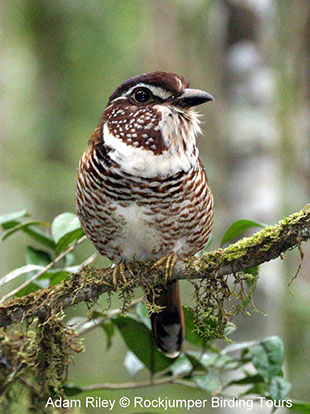
On some tours there are very few physical demands for participants, such as in East Africa, where much of the birding occurs in national parks, where you may not leave your vehicle due to potential danger from wild animals. If, however, you wish to look for Horned Guan in Guatemala, or Mount Cameroon Speirops in Cameroon, you would need to put in a great deal of effort to have a fair chance of seeing these particular birds. Long driving days can also be quite demanding physically, although this can often not be avoided on comprehensive birding tours where the object is to see as many of the region’s species or endemics.
Related to the above point is the intensity level of a tour, with some being very intense, including birding activities from predawn until dusk and often beyond, whereas others have several fairly relaxed days or breaks built in to the itinerary. Often some segments can be left out; for example, if you are not interested in taking part in a night walk, this can be a way to reduce the intensity of a tour, but many people are worried about missing special sightings and will try to minimize the experiences that they miss on any trip. Whether you sit down for every meal or take packed meals that you eat ‘on-the-fly’ can also heavily influence how much birding time is available every day. Since Rockjumper is the largest international birding tour company we are often able to offer tours with various levels of intensity to the same country. For instance, our shorter Highlights tours aim to provide a less intensive experience designed around less driving distances, comfortable lodges and more relaxed time in the field. Our Comprehensive tours are aimed at the keen birder and are usually slightly longer tours that aim for as many of the accessible endemics and as high a bird count as possible but still minimizing single night stays and allowing for some down time. At the other end of the scale, our Mega tours are designed for the hardcore birder and generally aim for record-breaking bird numbers, such as our Colombia Mega 1,000 Bird Tour, or every possible endemic. These tours are faster paced with long days in the field and regular one-night stops.
Comfort is also an important factor for many of our participants, and is a major deciding factor in the choice of a particular tour. On certain tours we can offer high quality accommodations and mostly smooth roads, such as in our home country South Africaand also in Thailand for example. However, this is most definitely not the case in many destinations, where conditions necessitate some unavoidable discomfort in order to seek our target species. The same can be said for meals; in India for example, where much of the food is spicy hot and fantastic if you enjoy that kind of cooking, but possibly a little monotonous (and fiery!) if you don’t. Many of the less developed countries often provide food that is not nearly as diverse as you may be used to, and this can sometimes be seen as rather problematic if you are a particularly fussy eater.
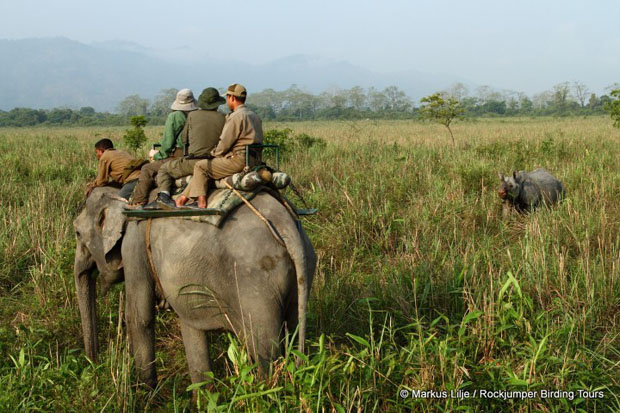
Whilst discussing difficult tours, we do advise our tour participants to do the toughest tours first. One is more likely to enjoy tours that are physically demanding or require rugged travelling and camping when you have higher physical fitness and mobility levels. We consider Cameroon, Papua New Guinea, Madagascar and Angola as some of these countries that potential tour participants should consider doing sooner rather than later in their birding careers. At the same time we also advise birders to prioritize destinations where the natural environment is being degraded at a rapid rate and birds becoming more endangered. For instance the Philippines, Madagascar and parts of Indonesia should all be very high on an international birder’s priority list as sadly these countries are rapidly losing their endemic biodiversity.
While our tours obviously target mainly birds and we attempt to see as many as we can, there are always numerous other attractions that we would never ignore – and these often significantly add to your travel experience and may even be amongst the top tour highlights. The obvious secondary target on most tours is seeing the area’s mammals, be it in Africa’s big game reserves where this could hardly be avoided, or searching for Tiger and Indian Rhino in India, Jaguar and Giant Anteater in Brazil, or many smaller and less well-known species in other parts of the world. On our India tour we also spend time at the fabled Taj Mahal in Agra, while in Bhutan visiting a few of the spectacular Dzongs (Buddhist temple-fortresses) is a highlight for many of our guests. Egypt’s incredible archaeological sites obviously form a significant component of our tour through this ancient land, and have been a huge attraction for millennia. During travel days in particular there are often ample opportunities to experience some of the local culture, although there may be times when we specifically target this aspect of travelling.
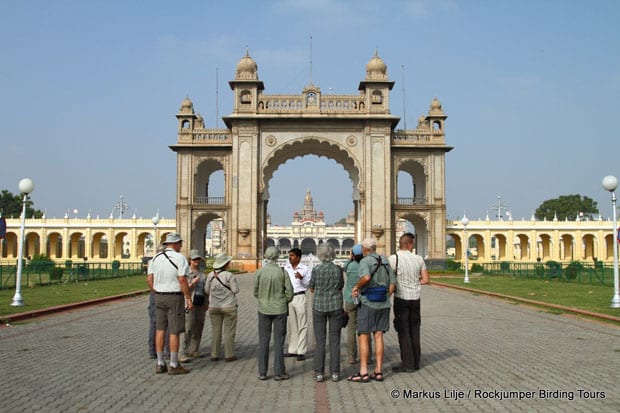
Many people enjoy the challenge of bird and wildlife photography, which can also be pursued on all of our tours. One thing that must be borne in mind however is that Rockjumper’s tours are intended primarily at finding and seeing the birds, rather than photographing them. Once we have found a species we will therefore stay around for the amount of time required for the group to adequately view and enjoy the bird. Photographers are welcome to use this opportunity to take images, and if done in a respectful way this can be a great enhancement to any tour, but only if the other participants (and the birds!) are not disturbed. Some tours are much better suited for bird photography than others, with open country destinations (eg South Africa, much of Northern India, Tanzania, Namibia and Brazil’s Pantanal for example) offering far more photographic opportunities than forest areas and countries where birds are still hunted (Papua New Guinea and the Philippines for example), thereby allowing a closer approach.
Another factor that people either seek out or try to avoid is a tour where you may experience a sense of adventure and discovery – be it due to uncertainties with weather, or getting to places where few other birders have ever visited. Some countries certainly offer this, such as Angola and remote areas of Indonesia, where ours tours have made significant discoveries and conditions can also be challenging. Papua New Guinea has a number of sites where you really feel like you are the only humans in that particular patch of remote forest, while a tour to Antarctica and South Georgia certainly visits some really remote places. Many countries do offer the necessary comforts that make our tours there seem less adventurous, where we stay closer to standard tourist routes such as some of our tours to South or East Africa or Europe, although even here we get to experience off-the-beaten-track areas, which are just another aspect of the general birding experience.
Each tour leader is different and has his style of structuring the tour, and different styles will work better with some personalities than with others. This can certainly have an impact on your tour, although experienced leaders will have the necessary know-how to deal with most personalities and situations. Sometimes it can be a good idea to see what experiences other birders have had travelling with a certain leader, though this could never be considered totally reliable. Although every company has a certain idea of how they run a tour in general, there is no way of making every tour the same, even if run within certain parameters. Seeing how different guides and tour leaders bird can actually be a great way of improving your own birding skills. Every tour leader also has certain interests you may have in common which would affect your enjoyment of a tour; they might be particularly interested in mammals, photography or certain bird families for example, or might be up-to-date with recent taxonomical changes or scientific publications that could make your tour more educational and memorable.
Group size is a tough one to quantify because of all the various factors involved. Obviously the smaller the group the better your contact will be with the tour leader, and the more likely it is that your needs will be taken into account to a greater degree. Smaller group sizes do come at a financial cost however. Larger groups also mean that you would be more likely to find other participants in the group that you get along well with – many lasting friendships have been formed when like-minded people meet on birding adventures. There are also more eyes and ears to find what you are searching with bigger groups. A large group in a forest however can be frustrating as people in the back might miss some of the shyer species, although with a good rotation system on trails no single person should miss too many species that are only glimpsed. Rockjumper specifies beforehand the maximum group size which varies from 6 to 12 participants but we also have a policy of sending a second leader if the group size exceeds 8. This is often very popular as the second leader can also then assist at the back of the group or even split the group under certain situations as well as take care of logistics if these become time-consuming, as they can be in countries like Papua New Guinea where a single leader could be kept away from the group for extended periods.

No-one will ever see every single bird species but it is well within the realms of possibility to see a representative of each of the approximately 240 bird families. This goal is becoming very popular with international birders, allowing them to sample the great diversity of the world’s birds. If this becomes your birding aim, then tours have to be carefully planned to maximize the number of new bird families with the minimum number of trips. Some monotypic families in particular only occur on specific islands, so tours to New Caledonia, Sulawesi, Borneo and Hispaniola (Dominican Republic) would be necessary, and larger islands like Papua New Guinea, Madagascar and New Zealand each harbor several endemic families.
These are just some of the main considerations when selecting a tour. Finally we’d also like to point out a possible solution if you feel that you cannot find a scheduled birding tour that meets your requirements, and this is private or customized tours. Private tours are the simplest way for you to control many of the factors mentioned above, as you can then decide within reason exactly how you would like the tour to run. The participants can decide if they want to change the structure of an existing tour, the length, and time of year, as well as the group size and intensity of the tour to suit their specific requirements as much as possible. This is a very popular option and one that can often be offered at a lower rate than our standard tour costs provided other factors remain similar.
Some of the above aspects may be very important for some people and irrelevant for others. To get ideas of which tours would be best suited to you and your specific interest/s and style of birding, it is often best to talk to previous tour participants and/or guides that have experienced the destinations themselves. Rockjumper’s friendly office staff would also be happy to provide advice and answer an questions that you might have. Previous trip reports are also a very useful reference tool in this regard; and, of course, some good general research on the Internet is always a good idea.
We hope this helps to clarify some of the many considerations involved in selecting your particular birding tour of choice. We wish you all the best in picking your perfect tours in future and look forward to birding with you at some time, wherever in the world this may be!
